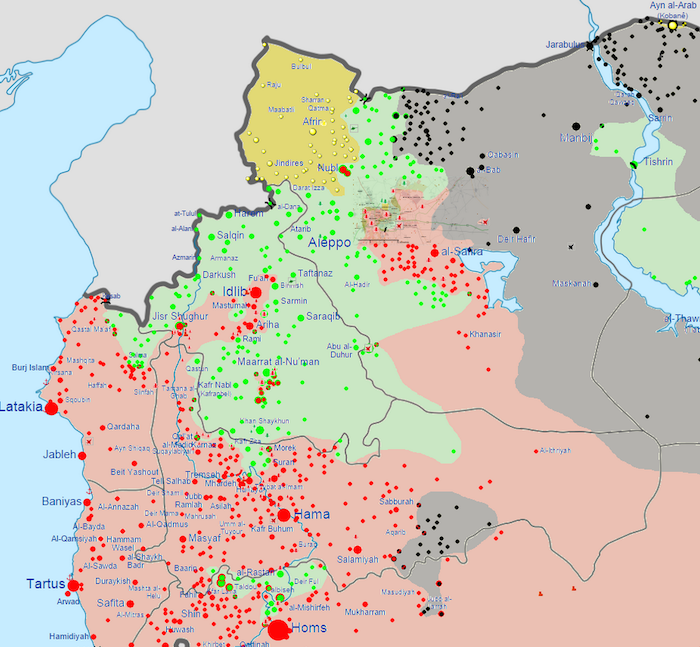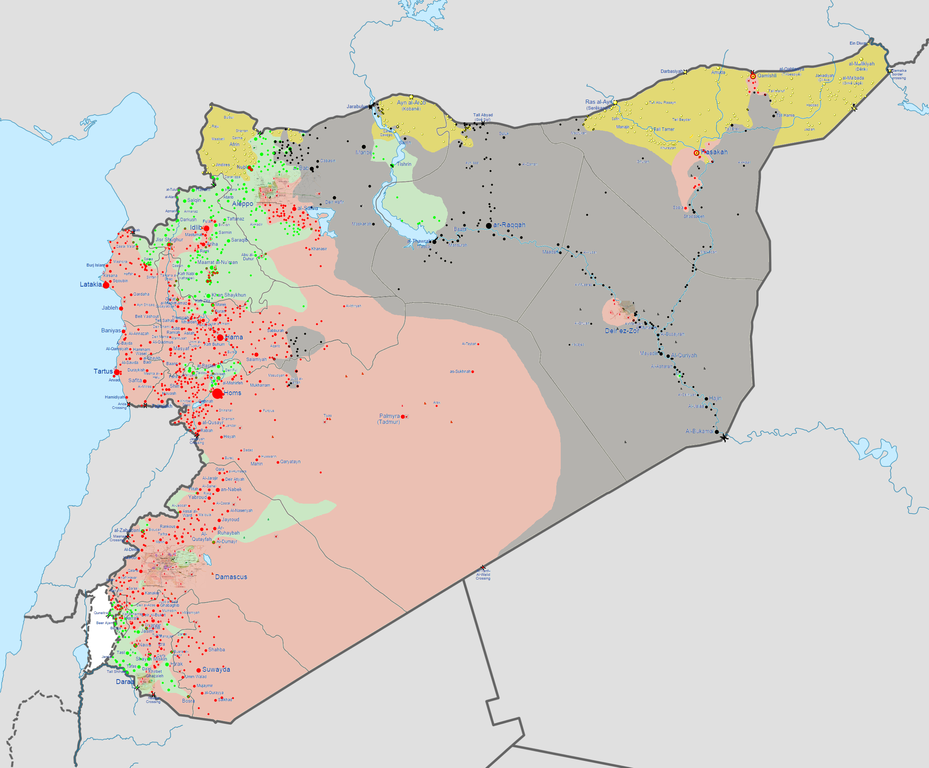Texas plumber says he has no idea how his old company truck ended up in a jihadi photo from the front lines of the war in Syria produced by the militant group ISIS.
The New York Daily News reported that Mark Oberholtzer of Texas City traded the company car in at a dealership in 2013 and hadn’t thought of it since.
On Monday, however, the Ansar al-Deen Front, a Syrian militant group, posted a photo featuring the black Ford F-250 pickup with an anti-aircraft gun mounted on the truck bed and the logo of Oberholtzer’s Mark-1 Plumbing Company and contact information emblazoned on the doors.
Ansar al-Deen Front (aka “Supporters of the Religion” Front) is one of the newer Syrian militant coalitions, operating as an alliance of three “neutral” rebel fighters (mostly foreigners) only since July 2014. They are based in western Syria and claim not to be aligned with either ISIS or the various FSA and Nusra Front groups opposing ISIS. This isn’t terribly surprising since they are apparently mostly not Syrians — hailing from farther flung places such as Morocco and Chechnya — which probably reduces their stake in the internal divisions of the anti-Assad groups.
But back to the poor plumber in Texas. Apart from the death threats from stupid people who can’t figure out this was obviously unintended, I love this story for its globalized absurdity. It is the perfect distillation of all the dedicated but under-appreciated reporting for about 10 years by all the Iraq correspondents noticing pre-owned/stolen North American vehicles repeatedly showing up in bombing attacks and trying to figure out how they got there but not being able to trace them very far. Even FBI investigations didn’t make definitive progress. See this 2005 account:
The inquiry began after coalition troops raided a bomb-making factory in Fallujah last November and found a sport utility vehicle registered in Texas that was being prepared for a bombing mission.
Investigators said they are comparing several other cases where vehicles evidently stolen in the United States wound up in Syria or other Middle East countries and ultimately into the hands of Iraqi insurgent groups — including Al Qaeda in Iraq, led by Jordanian-born Abu Musab Al Zarqawi.
Of course, Al Qaeda in Iraq was subsequently renamed the Islamic State in Iraq and Syria (ISIS), bringing the whole thing full circle to today’s conflict.
And this new story also involves another of my favorite topics (dating to the Libyan Revolution in 2011): Militants Driving Fast With Stolen Anti-Aircraft Guns on Pickup Truck Beds That Should Not Be Used That Way.
![]()






